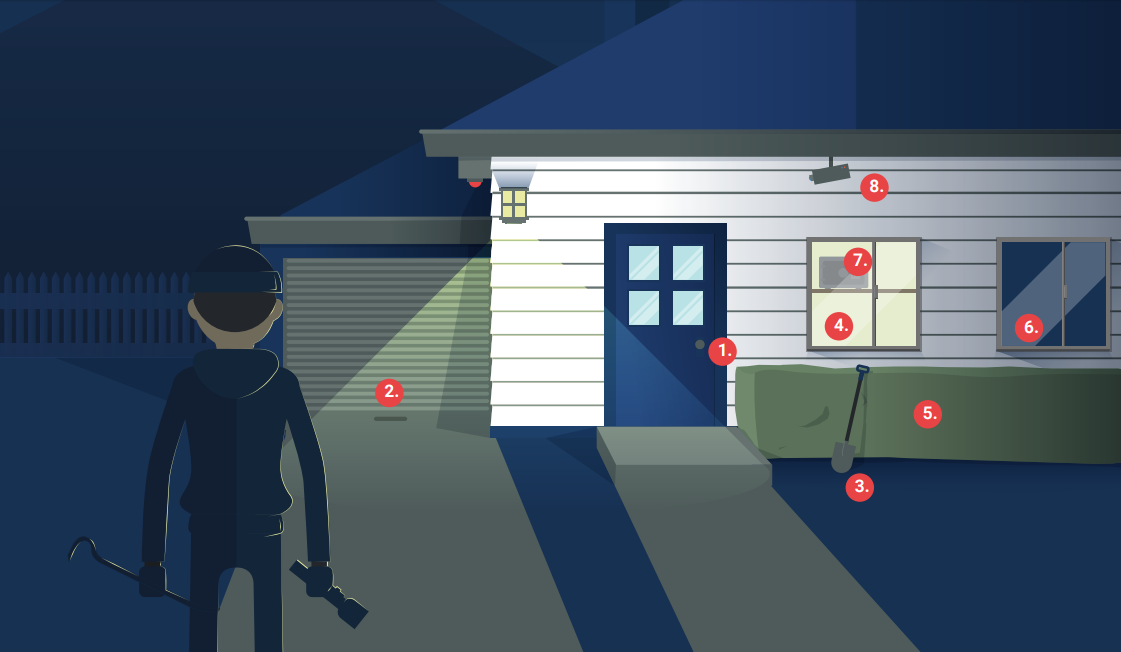What Are Some Secrets To A Good Golf Swing?
Swing is a very essential element in golf to improve your score. Minutes in a swing can turn a ball into a slice or hook. if you want to improve your swing in golf then you should have best golf balls.If you master the art of swing you can be a high caliber player in golf. Then discuss some of the beneficial ways to improve swing.

1. Limiting the height of the follow through will effectively reduce the height of your shots. The lower the hands, the lower the ball flight. Moving the ball back in your stance or choosing a stronger club and trying to swing easy are other ways to accomplish the same thing; however they’re not so much dependable but rather more hard to execute. Instead, keep your hands low in the finish, and the direction of your shots will be lower.
2. Ensure you’re on-plane at the top of the swing to ensure solid ball-striking and increased accuracy. Make sure that your right forearm is parallel to your spine, your left wrist is flat, and your elbows and arms form a right triangle. These are indications that you’ve rotated your shoulders into the back-swing correctly.
3. Each great golfer realizes that power comes from the body, not the arms. To figure out how to power the club with your body rather than your arms and hands, put the club behind the ball at address, with your body in a dead-stop position. Without taking a back-swing, attempt to drag the ball into the air. If you’re a player who uses his or her hands to control the club, you’ll probably struggle at first. Be that as it may, you’ll quickly find that once you begin moving the club with your body, you’ll start to get the ball in the air more consistently. This helps you turn entirely through the ball on the downswing.
4. Beginners have issues hitting crisp iron shots because of two fatal flaws. First, the takeaway tends to be too low to the ground, which delays the proper hinging of the wrists until too late in the back swing. Second, in a misguided effort to create power, the arms tend to swing too far in the back swing. This causes a breakdown in posture and usually leads to a reverse pivot. These flaws cause mis-hits and a lack of distance and control.A few straightforward steps can be taken to gain control over the length of the swing to create more solid contact. At setup, a 45-degree angle should be present between the left arm and the club shaft. This starts the swing with the wrists already hinged halfway to the necessary 90 degrees. During the takeaway, the hands should stay close to the ground while the club head moves up quickly. The goal is to get the left thumb pointing at the right shoulder as soon as possible. You’ll know you’ve accomplished the right wrist hinge when your left arm is parallel to the ground, and the club shaft is perpendicular to it. This sets the wrists much earlier in the back swing, eliminating the need to swing the arms too far at the top. The tendency to lose posture and reverse pivot will be removed with this more compact golf swing. Making the correct wrist hinge in the back swing will lead noticeably better ball-striking and, as a result, more consistent distance and direction on every single iron shot.
5. A few players like John Daly swing with their elbow flying out, while others like Sergio Garcia keep it in, demonstrating that it’s possible to hit incredible shots with either strategy. In any case, my biomechanical studies indicate that the flying right elbow position favors a fade ball flight while a tucked right elbow promotes a draw. If you struggle with slicing or have always wanted to develop a power-rich draw, then the right angle may hold the answer. Additionally, when you let the right elbow fly, it tends to raise the right shoulder skyward, which quite often causes an over-the-top move during the downswing and a variety of poor outcomes. The key for long-term success is to eliminate the faulty shoulder tilt and right elbow position at the top. The most efficient right elbow position for keeping slices at bay and promoting a draw is on or just inside the seam running down the right side of your shirt. When you put your right elbow in this general area, it enables the shoulders to swing level to the spine, making it considerably less demanding to drop the club inside on the downswing for the maximum power and improved control.
6. An open face at the point of contact can cause a slice. In this, too, can a faulty swing path, even if your clubface is square to the target at impact. Slicers’ swing paths tend to come excessively outside in (hookers, vice versa). All golfers need a way that comes just slightly from the inside. Try the Box Drill. The top half of a golf ball box and stand it on its side. Align the box parallel to your target line. Try to groove a path that allows the shaft to pass just over the box. For slicers, set up the box on the same line, but just forward of the golf ball. Try not to hit the box.
7. “Flippiness” (the dreaded early release) happens if your body gets too far in front of the golf ball. At the point when this happens, your club will drastically lag, more often than not with an open face. Instinctually, your hands will work to close the face at impact. This level of timing is difficult even for the pros to execute on a consistent basis. What for the most part happens is the club head race in front of the shaft and strikes the ball with an open or a closed face, and typically on an ascending arc. In baseball, if you get too far in front, you’ll hit the ball to right field, unless you flip the wrists. The same is true in golf. You need to establish a firm left side to keep your head behind the ball and stop the flip.

2. Ensure you’re on-plane at the top of the swing to ensure solid ball-striking and increased accuracy. Make sure that your right forearm is parallel to your spine, your left wrist is flat, and your elbows and arms form a right triangle. These are indications that you’ve rotated your shoulders into the back-swing correctly.
3. Each great golfer realizes that power comes from the body, not the arms. To figure out how to power the club with your body rather than your arms and hands, put the club behind the ball at address, with your body in a dead-stop position. Without taking a back-swing, attempt to drag the ball into the air. If you’re a player who uses his or her hands to control the club, you’ll probably struggle at first. Be that as it may, you’ll quickly find that once you begin moving the club with your body, you’ll start to get the ball in the air more consistently. This helps you turn entirely through the ball on the downswing.
4. Beginners have issues hitting crisp iron shots because of two fatal flaws. First, the takeaway tends to be too low to the ground, which delays the proper hinging of the wrists until too late in the back swing. Second, in a misguided effort to create power, the arms tend to swing too far in the back swing. This causes a breakdown in posture and usually leads to a reverse pivot. These flaws cause mis-hits and a lack of distance and control.A few straightforward steps can be taken to gain control over the length of the swing to create more solid contact. At setup, a 45-degree angle should be present between the left arm and the club shaft. This starts the swing with the wrists already hinged halfway to the necessary 90 degrees. During the takeaway, the hands should stay close to the ground while the club head moves up quickly. The goal is to get the left thumb pointing at the right shoulder as soon as possible. You’ll know you’ve accomplished the right wrist hinge when your left arm is parallel to the ground, and the club shaft is perpendicular to it. This sets the wrists much earlier in the back swing, eliminating the need to swing the arms too far at the top. The tendency to lose posture and reverse pivot will be removed with this more compact golf swing. Making the correct wrist hinge in the back swing will lead noticeably better ball-striking and, as a result, more consistent distance and direction on every single iron shot.
5. A few players like John Daly swing with their elbow flying out, while others like Sergio Garcia keep it in, demonstrating that it’s possible to hit incredible shots with either strategy. In any case, my biomechanical studies indicate that the flying right elbow position favors a fade ball flight while a tucked right elbow promotes a draw. If you struggle with slicing or have always wanted to develop a power-rich draw, then the right angle may hold the answer. Additionally, when you let the right elbow fly, it tends to raise the right shoulder skyward, which quite often causes an over-the-top move during the downswing and a variety of poor outcomes. The key for long-term success is to eliminate the faulty shoulder tilt and right elbow position at the top. The most efficient right elbow position for keeping slices at bay and promoting a draw is on or just inside the seam running down the right side of your shirt. When you put your right elbow in this general area, it enables the shoulders to swing level to the spine, making it considerably less demanding to drop the club inside on the downswing for the maximum power and improved control.
6. An open face at the point of contact can cause a slice. In this, too, can a faulty swing path, even if your clubface is square to the target at impact. Slicers’ swing paths tend to come excessively outside in (hookers, vice versa). All golfers need a way that comes just slightly from the inside. Try the Box Drill. The top half of a golf ball box and stand it on its side. Align the box parallel to your target line. Try to groove a path that allows the shaft to pass just over the box. For slicers, set up the box on the same line, but just forward of the golf ball. Try not to hit the box.
7. “Flippiness” (the dreaded early release) happens if your body gets too far in front of the golf ball. At the point when this happens, your club will drastically lag, more often than not with an open face. Instinctually, your hands will work to close the face at impact. This level of timing is difficult even for the pros to execute on a consistent basis. What for the most part happens is the club head race in front of the shaft and strikes the ball with an open or a closed face, and typically on an ascending arc. In baseball, if you get too far in front, you’ll hit the ball to right field, unless you flip the wrists. The same is true in golf. You need to establish a firm left side to keep your head behind the ball and stop the flip.



Comments
Post a Comment